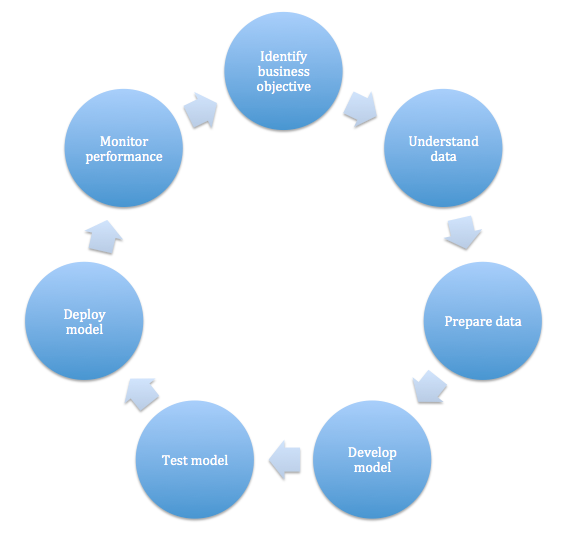From an organizational standpoint, predictive analytics is the art of extracting information from heterogenous sources of data in order to identify patterns, gain insights and accurately predict future outcomes. But before delving any further, let’s answer the question lingering on your minds. What is BIG DATA?
Eric Schmidt, the executive chairman of Google puts it aptly as, “From the dawn of civilization until 2003, humankind generated five exabytes of data. Now we produce five exabytes every two days…and the pace is accelerating.” (What The Heck is… Big Data? | LinkedIn, 2013)
It’s not just the volume of data but also the velocity at which the data is generated and variety that goes along with it. The challenge that firms face today is how to harness this data and derive actionable business decisions from it. That’s where business and predictive analytics takes center stage.

Photo via business2community.com
Business Analytics Vs Predictive Analytics
Organizations have traditionally been building data warehouses and using business intelligence (BI) tools to report on the business. BI tools present executives with easily consumable information to help them to understand their businesses. But predictive analytics is different. Advanced statistical, data mining, and machine learning algorithms dig deeper to find patterns that traditional BI tools may not reveal. Big data is the fuel and predictive analytics is the engine that firms need to develop, deploy, and profit from the knowledge they gain.
How to build a robust Predictive Analytics Solution
Building a Predictive analytics solution is a continuous and an iterative process which requires an integrated enterprise wide approach. To create a successful predictive analytics model, organizations should:
Identify the business objective: Organizations should clearly establish the objectives before investing in predictive analytic solutions. As Ken Rudin, Director of Analytics for Facebook, says, “find a needle, move the needle.” In other words, understand the business problem or objective that the solution would addresses and try to start small. Prioritize your business units (BU’s) and start with the one that has the lower priority.
Understand the data model: Firms should understand the variety of sources from which the data is generated. This activity helps the organizations to evaluate their readiness for a predictive analytics solution based on the underlying data model.
Prepare the data: This is the most challenging task as raw data has to be collected, cleansed and transformed into information to be used for predictive analysis.
Develop the Predictive model: The next step involves using different predictive analysis tools to run analysis algorithms against a subset of the data. There are hundreds of different statistical and machine learning algorithms and combinations that data analysts can run against the data to find predictive models.
Test the model: Once the model is identified, the data scientist or data analyst should evaluate the model using a set of identified business metrics. This process has to be continued until the most effective model which gives the closest prediction is found.
Deploy the model: Deployment of the predictive model should be a well planned and a closely coordinated activity that involves all the key stakeholders within the organization. Taking time to identify the best deployment approach goes a long way in eliminating post-deployment issues and enables organizations to quickly realize the business benefits.
Monitor for effectiveness: It is important to monitor the implemented solution as this helps to validate the business improvements, resolve issues and find key enhancements to improve the product. This process needs to be a never-ending cycle which aims to constantly refine the predictive analytics model.
Hope you had fun reading. Let me know your thoughts and comments.

